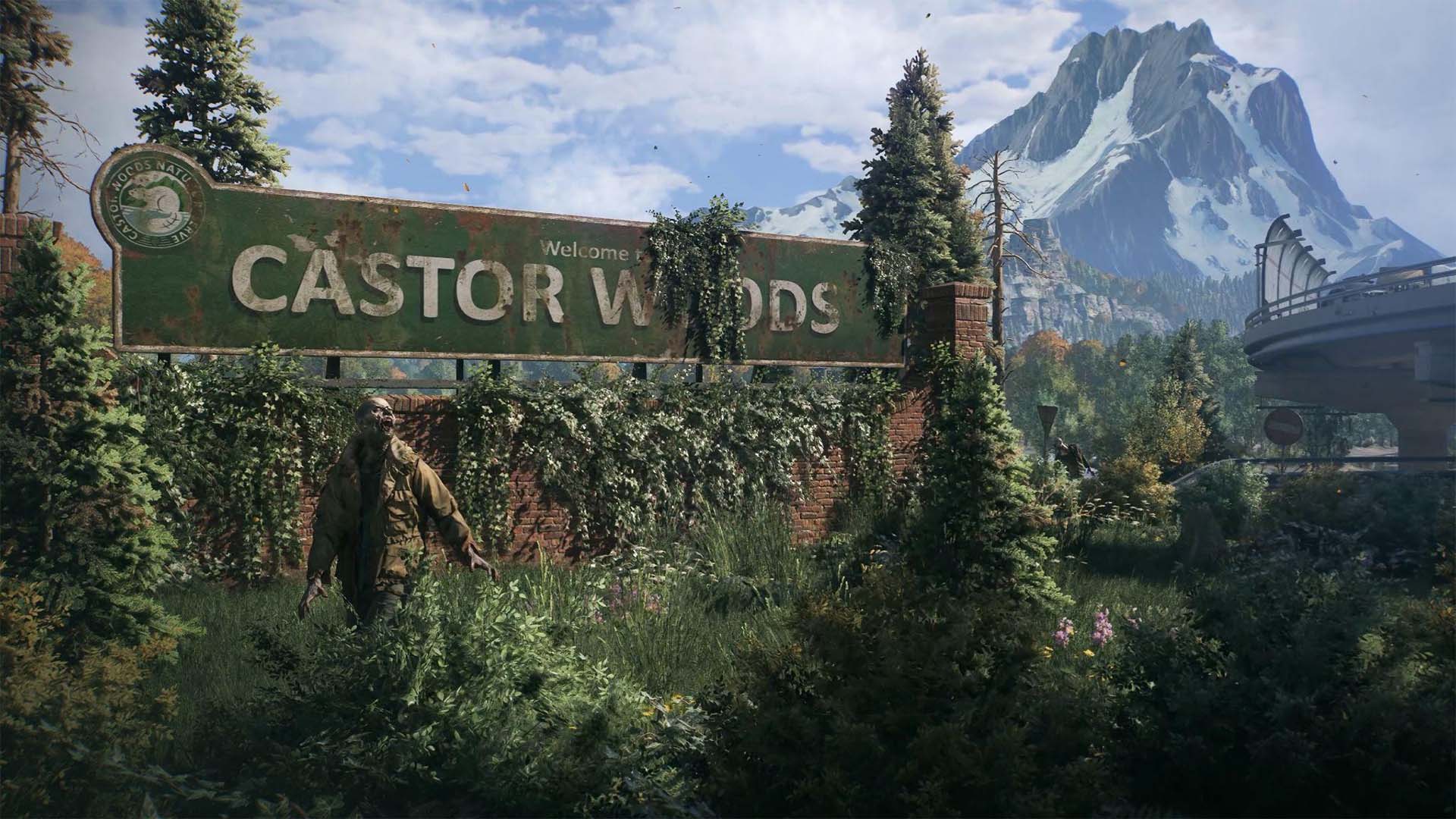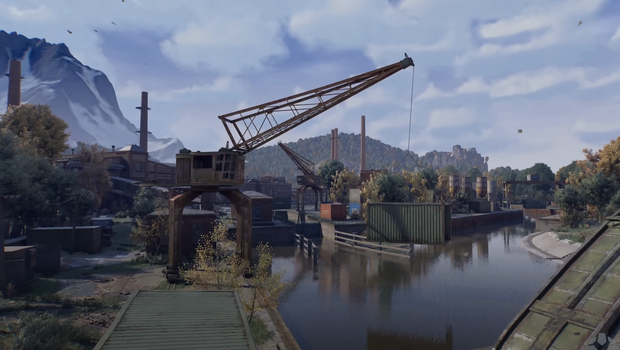Gamescom is always full of noise, bright banners, and endless lines of players chasing the next big thing and sometimes you just look for something familiar, something you know you will have a great time with. Dying Light: The Beast was exactly that. Fifty minutes locked inside Castor Woods felt raw, oppressive and unforgettable. It is not a playground, it is a trap disguised as a town, where survival is written in sprinting footsteps and blood-slick blades.
Castor Woods as a living, breathing threat
Castor Woods is more than just a backdrop. It is the first true character you meet. Once a peaceful tourist valley filled with cabins, vineyards and a quaint Old Town, it now feels like a postcard rotting in the rain. Every alley, every rusted gate and every collapsed bridge oozes menace. Techland has a knack for building spaces that are as inviting as they are deadly, and here that balance feels sharper than ever.
Zombies are everywhere. Not scattered, not polite, but present in overwhelming numbers. Run blindly through Old Town and you will not last long. The demo made it clear that this game demands you to read the environment and react. Parkour is not a flashy add-on, it is your last line of defence. Every jump becomes a gamble, every wall-run a desperate attempt to break free. The difficulty is not subtle. Castor Woods is out to crush you, and it feels exhilarating.
The weight of every weapon
Combat has always been the second pillar of the Dying Light formula, and The Beast leans hard into that identity. This is not a shooter where you mow down waves from afar. It is up close, personal and violent. Every melee weapon in the demo carried weight. A crowbar doesn’t just swing, it crunches. A machete bites. An axe feels like it could slip from your sweaty palms at any moment. It is tactile combat, the kind that makes you wince when you connect.
Techland also teased heavier firepower, though these were clearly placed as rare gifts for the demo. Flamethrowers turned narrow streets into ovens. Molotov cocktails painted alleyways orange as zombies stumbled through the fire. Throwing knives detonated in satisfying bursts, cutting holes in the sea of bodies. There were even grenade launchers for the moments where subtlety had no meaning anymore. These are not everyday tools, but their inclusion underlines the scale of the threat. Castor Woods is not a place where you get by with a kitchen knife.
What stood out is how all of this never feels overpowered. Legendary weapons bring a rush, but they do not erase the danger. Zombies keep coming. Their aggression outnumbers your arsenal, and that constant imbalance makes every encounter feel tense. Even when fire burns or explosions echo, you never forget that you are one mistake away from being cornered.
The Beast within
The title is not just a dramatic flourish. Crane’s new Beast Mode has the potential to redefine how players experience survival horror. Though not fully unleashed in the demo I played, its presence was clear. Rage builds inside the protagonist, and when it bursts, he stops being the prey. Imagine ripping doors from cars and swinging them like toys, hurling furniture across rooms or tearing zombies apart with sheer brute strength. That primal ferocity transforms the tone of the fight.
What excites me most is the strategic layer this introduces. You cannot live in Beast Mode permanently. It is something you build, something you unleash when the horde tips into chaos. In the rhythm of the game it becomes a heartbeat. Regular combat is tense and desperate, but Beast Mode is catharsis, a release valve for all that pressure. In a genre where survival often feels fragile, the chance to push back with animalistic power feels both fresh and necessary.
Plumbing in hell
The story thread of the demo sounds mundane on paper. You are tasked with fixing a water-pressure issue. Pipes are failing, and someone needs to crawl through Old Town and into the sewers to find the source. It is the kind of errand you would roll your eyes at in another open-world RPG. But in The Beast, that very banality is what makes it brilliant.
Every step of that plumbing quest forces you deeper into the belly of Castor Woods. At first you are running along rooftops, checking valves on the surface. Then you are slipping into half-collapsed tunnels. Finally you descend into the sewers, a labyrinth of dripping concrete and rusted iron. The deeper you go, the more oppressive it becomes. Water drips in echoes that sound like footsteps. Pipes moan and groan as though alive. Zombies appear where you least expect them, emerging from corners like shadows given flesh.
This kind of mission highlights how Techland builds tension not just through combat but through contrast. Fixing water pipes is simple, almost laughable in its triviality. But inside Castor Woods, nothing is simple. Every moment of quiet hides the growl of something about to lunge. That is what the demo excelled at. It showed how the ordinary can become terrifying when placed inside a world that wants you gone.
Early conclusion:
Fifty minutes in Castor Woods made one thing crystal clear. The Beast is not a safe sequel. It is not a polished retread of what came before. It is a leap back into survival horror with sharper claws. Parkour is faster, more fluid, and more necessary. Combat is bloodier, heavier and more desperate. Missions blur the line between the mundane and the horrific, turning simple objectives into nerve-racking ordeals.
It is also one of the bloodiest games I have played in a long time. Limbs fly, heads burst, blood arcs in thick sprays across your screen. The violence is not subtle, but it never feels gratuitous. It feels earned, a natural consequence of the close-quarters combat and the density of the horde. It shocks, but it also immerses. You cannot look away because you are too busy surviving.
What I appreciated most was the flow. The Beast does not slow down to explain itself. Movement, combat, exploration, puzzle-solving, it all runs together like a grim symphony. One moment you are sprinting across rooftops, the next you are checking water pressure, then suddenly you are knee-deep in a sewer brawl. That constant rhythm of play makes the world feel alive and unforgiving.




